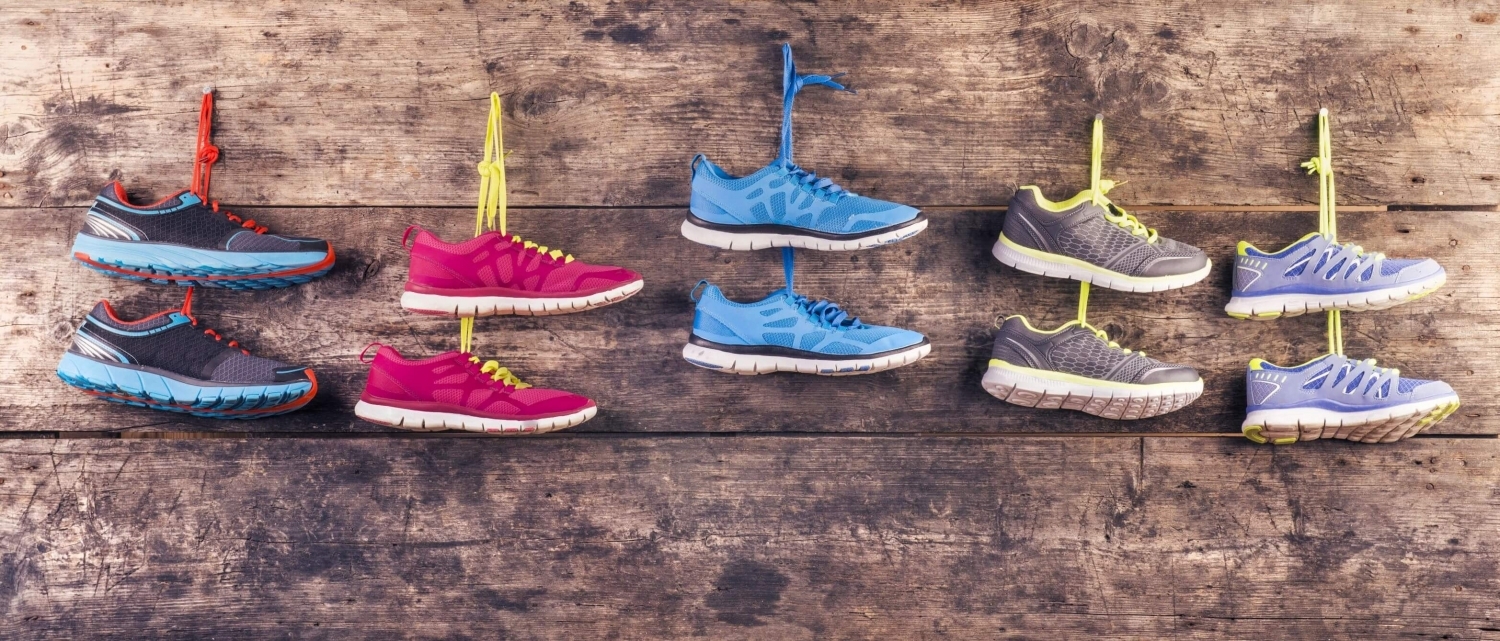These Shoes Are Made for Walking

All workout shoes are not created equal. This sentiment is true whether your new shoes were made by a popular sports brand with a high price tag or tout fresh treads. Yet, many consider these features credentials when evaluating if their shoe is doing its job. Your joints will thank you if you consider the type of shoe needed instead of being wooed by a flashy advertisement or the look of a new pair of kicks. To find the right shoe for you, follow these helpful tips.
Identify your desired workout/activity.
Activity-specific shoes are designed to support your body’s needs with comfort and safety in mind. For example, rookie exercisers may assume they can substitute running shoes for a high-intensity interval training (HIIT) workout (think: ice skaters or skater jumps). A closer look at the function and structure of the appropriate shoe demonstrates why this would be unwise. Running shoes are designed for forward movement. On the other hand (or foot), a cross-trainer shoe supports fast-paced lateral, or side-to-side, movement. Padding and shock absorption is placed in different locations to support the impact of the associated movement – running shoes rely on your heel while lateral action calls on the forefoot to bear weight. In short, aligning your activity and shoe reduces your risk of injury and extends the life of your shoe from improper wear.
View your natural gait to identify your foot structure.
It would be remiss to focus solely on attire when discussing exercise gear. Your feet play the starring role! The way you walk helps determine the natural placement of your foot during activity, otherwise known as pronation. Your foot rotates to absorb the impact and responds in one of three ways: neutral, overpronation, or supination.
“Overpronators” roll their feet inward, putting weight on the insides of their feet with each step.
“Supinators” do the opposite – their feet roll outwards, and weight is placed on the outer sides of their shoes. The goal of a supportive pair of shoes is to support a neutral response, a stance assumed by those with neutral pronation. A good pair of shoes will help to counteract the negative effects of over-or under-rotation, and generally feel more comfortable. This is specifically helpful to identify when purchasing running, walking, or hiking shoes.
People often list health as a primary motivator to work out regularly. Your physical fitness and cardiovascular system benefit from engaging in activity that gets your blood pumping. Using a shoe that does not align with your activity of choice can lead to injury in your foot and beyond. Ignoring a foot problem can affect other parts of your body, traveling up to wreak havoc on your knees or hips. An investment in a good pair of shoes that supports your natural gait and desired movement is a smart move all around.
SOURCE: United Benefit Advisors (UBA)

 Prev
Prev

